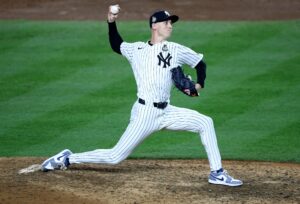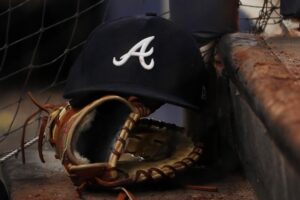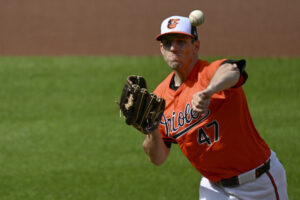Auburn University has a history of developing good pitchers. Most recently in 2018, Casey Mize concluded his dominant career as the first-overall pick in the MLB Draft by the Detroit Tigers. Two years later, his former teammate Tanner Burns looks primed to be the school’s second pitcher drafted in the first round in three years.
Burns, a right-handed pitcher, was named Gatorade’s State Player of the Year for Alabama in 2017. In spite of that, he slipped to the 37th round of the draft due to his size and signability. Once Burns arrived on Auburn’s campus, he immediately found himself as one of their weekend starters. Since then, he hasn’t looked back on route to being the 28th-best draft prospect, according to MLB.com.
Burns was consistently very good in college, compiling a 2.86 ERA in 188.2 innings pitched. His career WHIP was also superb at 1.166. Prior to the suspension of the 2020 NCAA season, Burns was posting career-bests in both stats with a 2.42 ERA and 0.985 WHIP. In one of his best collegiate starts during his sophomore year, he struck out 15 batters, tying a school record held by several men, including Mize and Tim Hudson.
Strengths
Tanner Burns wields a fastball that typically sits in the 92-97 MPH range. This pitch proves to be his best, receiving 60/80 grade from scouts. He can also locate it very well on both sides of the plate, leading to great control numbers in his college career. Over the last three seasons, he has posted a K/9 of 10.0 and a K/BB rate of 3.13.
Even more remarkable is that those numbers were even higher in the latter two seasons. His K/9 was 11.4 in 2019 and 12.9 in the abbreviated 2020 season and his K/BB was 4.39 and 4.57, respectively.
Burns also possesses a breaking ball that can be a plus pitch. Scouts classify it as a slider with a 55 grade, but it can act more like a slurve. The pitch has slider velocity, sitting in the low-80 MPH range, but the depth of its break resembles that of a curveball.
Weaknesses
Despite the poise Burns has shown on the mound going back to his high school days, he does come with some concerns. Durability is one of them. At six feet tall and 205 pounds, Burns does not have the biggest frame, and he has dealt with shoulder tightness throughout his time at Auburn. This injury has caused him to miss starts before, most notably limiting him during Auburn’s run to the College World Series in 2019.
The durability issues continue when considering that he never pitched a full college season where he did not show a drop off in his stuff from beginning to end. Scouts were hoping to see a more consistent display of his stuff in 2020, but that did not come to fruition. He possesses strength and athleticism, but scouts feel he has already squeezed all of the potential out of his small frame.
Additionally, Burns does not have a great third offering to go along with his fastball and breaking ball. He occasionally throws a changeup with sink to it. The one caveat to that is that he has not needed to throw the pitch as much. As he develops in professional baseball, he can work on incorporating it more and making it an average third pitch.
MLB Comp
A good comp for Tanner Burns is current Cincinnati Red, Sonny Gray. Gray is a former-SEC pitcher, who has an even smaller frame than Burns does at five feet, ten inches and 192 pounds. Gray has a more diverse pitch mix then Burns, but he throws a fastball, complemented with a curveball and slider.
Gray’s curveball sits in the low-80 MPH range, similar to Burns’s slurve which has curveball depth and low-80s velocity. These similarities show that there is promise for a pitcher lacking size, such as Burns, if he can manage to stay healthy.
Burns’s talent and exceptional collegiate career make him a great option for any team so long as they feel comfortable about his health and size.
Main Photo: Embed from Getty Images






